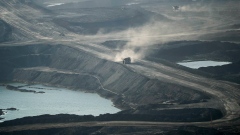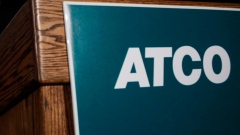Apr 12, 2023
Stephen Poloz: Canadians' expectations will drive inflation lower
, BNN Bloomberg
My sense is that interest rates are likely to be declining in second half of the year: Stephen Poloz
Former Bank of Canada governor Stephen Poloz said he expects inflation will continue falling this year as the headline rate drops and people’s expectations follow.
He made the comments to BNN Bloomberg’s Amber Kanwar in an interview on Wednesday, after the central bank announced it would hold its key interest rate at 4.5 per cent for the second consecutive month, following a year of aggressive tightening.
Poloz, now a special advisor at Osler, said inflation will come down faster if people begin to expect it, but he noted that prediction is a “judgement call,” and Bank of Canada is in a “tense” period as it waits to see the effects of its monetary policy approach unfold.
“As we go forward, as the headline rate keeps falling, I think people are going to be reassured and their expectations are going to go more quickly back to the two per cent expectation,” he said.
“The bank is in a very good position to make this analysis, so we’re just in that tense kind of period. How quickly does the dynamic unfold?”
Year-over-year inflation had cooled to 5.2 per cent in February, according to Statistics Canada, still higher than the Bank of Canada’s target of two per cent. Poloz said the Bank of Canada should show “vigilance” in its approach interest rates to help drive people’s inflation expectations lower.
Poloz said he also anticipates that interest rates will decline in some way in 2023, even if the Bank of Canada does not cut rates itself and the market responds to economic conditions.
“My sense is that interest rates are more likely to be declining in the second half of the year. If it’s not the central bank rates, it’ll be the bond market that does that,” he said.
As for the string of “blockbuster job reports” Statistics Canada has shared in recent months, Poloz said the figures could actually speak to disinflationary impacts of supply chain issues being resolved – countering some economists’ concerns that the tight labour market could keep inflation sticky.
More immigration to Canada also has a disinflationary effect, Poloz said, because “every person you add to the workforce adds to GDP more than what they spend.”
“It’s very possible to have a resilient economy with strong, real indicators while inflation is falling,” he said. “That's the opposite of stagflation, and that's exactly the situation we're finding ourselves in.”






